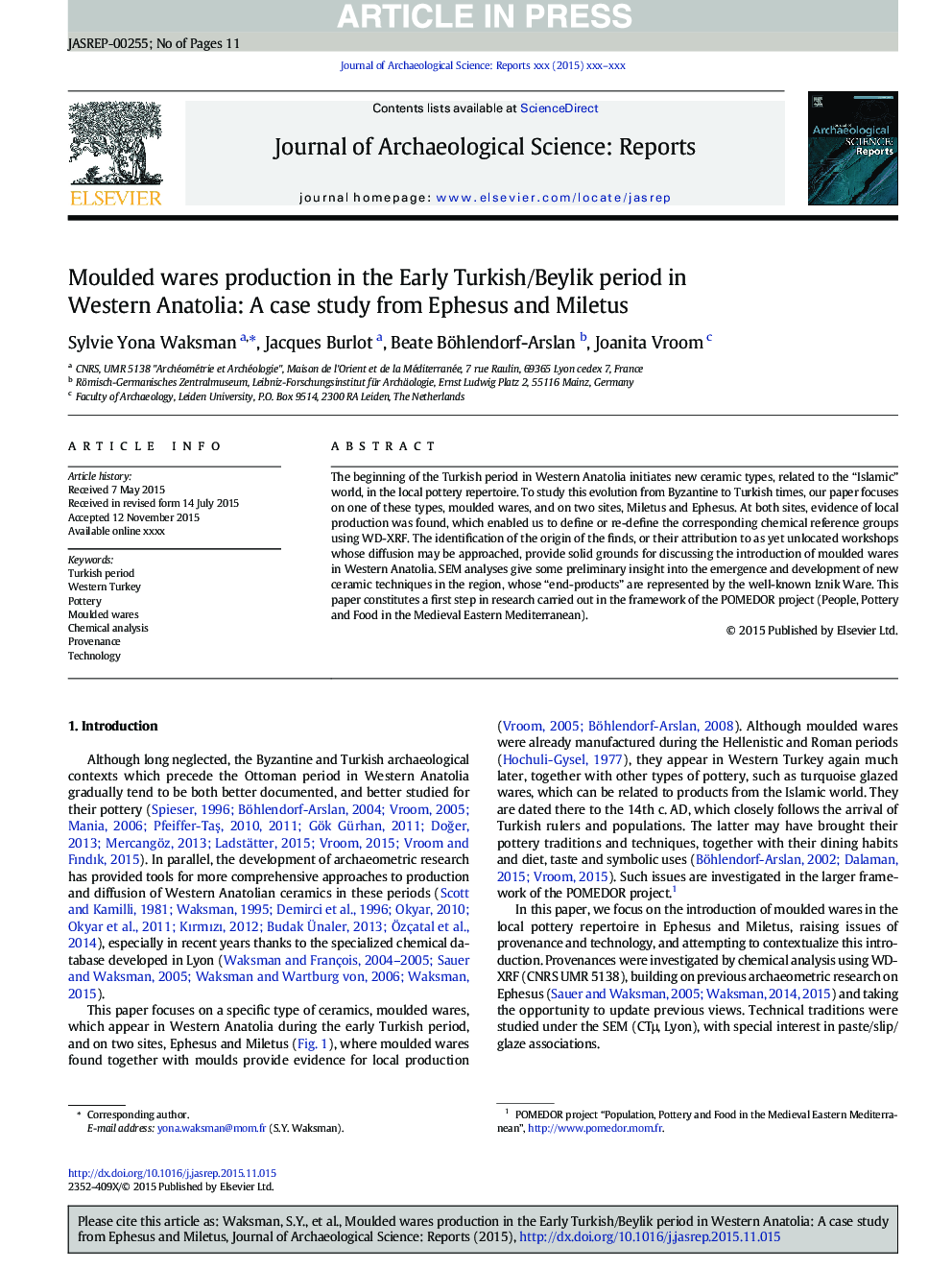| Article ID | Journal | Published Year | Pages | File Type |
|---|---|---|---|---|
| 7445090 | Journal of Archaeological Science: Reports | 2017 | 11 Pages |
Abstract
The beginning of the Turkish period in western Anatolia saw the arrival of new ceramic types in the local pottery repertoire, related to the 'Islamic' world. To study this evolution from Byzantine to Turkish times, we have focused in this paper on one of these types, moulded wares, and two sites, Miletus and Ephesus. At both sites, we were able to define or redefine chemical reference groups based on evidence of local production using wavelength-dispersive X-ray fluorescence (WD-XRF). The identification of the origin of the finds or their attribution to as yet unlocated workshops, and the study of the distribution of wares manufactured in these workshops, provides the basis for discussing the introduction of moulded wares in western Anatolia. Scanning electron microscopy (SEM) analyses have also provided some preliminary insights into the emergence and development of new ceramic techniques in the region, whose 'end-products' are represented by the well-known Iznik Ware. This paper presents results from initial research carried out within the framework of the POMEDOR project (People, Pottery and Food in the Medieval Eastern Mediterranean).
Related Topics
Social Sciences and Humanities
Arts and Humanities
History
Authors
Sylvie Yona Waksman, Jacques Burlot, Beate Böhlendorf-Arslan, Joanita Vroom,
